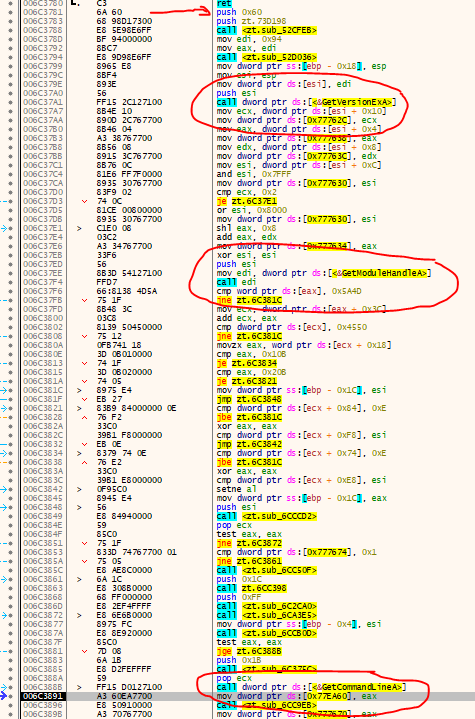Zoo Tycoon 2
by OldGamesCracking
Game Specs
| Name | Zoo Tycoon 2 |
|---|---|
| Release-Date | 11/2004 |
| Redump ID | 121332 |
| Protection | SmartE |
| Cracked under | Win 10 |
| Tested under | Win 10 |
| Scene-Crack by | ??? |

Needed Tools:
- x32dbg
- ProcMon
- Compiler, Dev-IDE and stuff (e.g. VisualStudio)
- The original Game-CD of course ;)
How to Crack
This protection is quite unusual in some regards. I have never heard of it and judging by the entries at redump.org there are not many games that used it though it might have been in action from roughly 2004 to 2007. I found it while browsing the supported protections that BinaryObjectScanner can detect.
Anyways, since I did not knew what to expect, I first used ProcMon to get myself an overview and could see right ahead that the game.exe seems to spawn an external process:

This worker is always named insXXXX.tmp with XXXX beeing randomly (?) chosen chars.
I then tried to run the game in the debugger which worked fine, even without having Scylla enabled at all, but as soon as I tried to break in interesting places, the game was shut down. So it was kinda clear that the insXXXX.tmp process was probably overlooking the whole situation and as soon as anything went wrong, it would shut the game.exe down.
To figure out more details about the inner mechanism of the protection, I used the same setup as described in the Stronghold Deluxe article and injected a DLL in the game.exe and also in the insXXXX.tmp (worker.exe) to hook some functions. From there I could see that both processes communicate via two events that are set/reset many times. Also the NetBIOS protocol is used, probably as a way to transfer larger data chunks (imports, decrypted game data ?) between the two processes. I did not dig deeper into this since it was not mandatory to do so, but I believe that this communication channel is also used to detect if the game.exe is beeing debugged via checking if the game responds to requests within a certain timeframe and if it does not, it is probably beeing debugged because the debugger halted execution (breakpoint etc.).
Just for the record: The first event I mentioned earlier is called BITARTSxxxxxxxxxx and is created by the game.exe. The xxxxxxxxxx part is passed to the worker.exe via the lpCommandLine parameter in the call to CreateProcessA.
The second event is called BITARTSYYYY and is created by the worker.exe. I did not figure out where the YYYY part is generated, but I guess it’s based upon the pid of the worker.exe or is encoded in the xxxxxxxxxx string. In the end it does not matter since we actually do not need this information to crack it ;)
What I did then was to figure out the place where the loader code transitions to the game code. For that I did some wild guesses and installed hooks for some functions that are usually called around the OEP (GetVersion, GetCommandLineA, …). I got some results for GetCommandLineA and displayed a MessageBox once the function was called which is a simple but effective trick to halt the program at a certain point. Once the MessageBox was displayed, I attached x32dbg, placed a breakpoint after the call to MessageBoxA, stepped out and had a look around:

The two other intermodular function calls (GetVersionExA and GetModuleHandleA) gave me the confirmation that we were indeed just a few lines past the OEP and that the actual OEP must be at 0x006C3781. The question was now, how can we reach it? Simply putting a HW BP there did not seemed to do the trick. After a bit of fiddling around, I realized that - contrary to my initial believes - there is actually an anti-debugging mechanism in place that kills the HW Breakpoints. Checking the ScyllaHide options KiUserExceptionDispatcher and NtContinue is enough to make the program break on the OEP. The corresponding SEH where the breakpoints are killed is here:

Now that we know where the OEP is, let’s put a HW BP there, restart the program and break right on the OEP ;) From here we can directly use Scylla to dump the game and restore the IAT, there are no scrambled imports. For me, two imports were replaced with stubs from aclayers.dll. Scylla can not reconstruct these imports. Luckily there are debug strings that we can use to get the original functions and fix them manually:

That’s it. I hope there are no late checks in the game, but upon playing for a few minutes, I could not find anything unusual.
tags: Zoo Tycoon 2 - Game Cracking - Reverse Engineering - SmartE